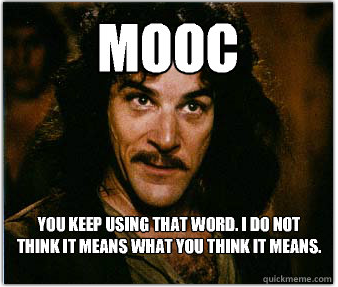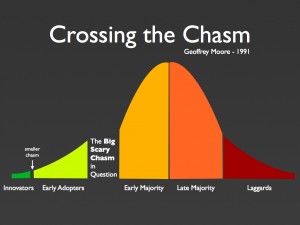this is a response posted to “The MOOC Moment and the End of Reform” by Aaron Bady in The New Inquiry, May 15.
“MOOC” means Massive Open Online Course, as in the courses now being offered by Udacity, Coursera, and EdX in partnership with universities.
–——————
You have good observations and critique, and there’s certainly room for suspicion around MOOCs, but I think this article succumbs to a somewhat paranoiac cultural-studies frame.
Yes, there’s hype around MOOCs, people championing them for some questionable reasons, and incomplete referencing of the history of online pedagogy. But there are also real issues and opportunities driving the phenomenon, not merely deluded or cynical hype, and you tend to caricature MOOCs as rather more fixed and well-defined than I believe them to be.
In your presentation, the current mainstream system of in-classroom teaching is self-evidently the “real” and better educational experience, and MOOCs are an unproven threat.
I’d say that the current system has pervasive problems of cost, access, equality, and outcomes, and we’re in a moment of new possibilities opening up to address some of those problems: not only the MOOC form, but more flexible accreditation, perhaps not controlled by the incumbent higher-ed sector; new learning approaches and technologies.



